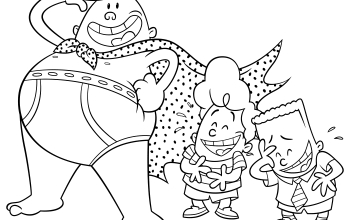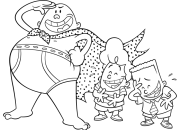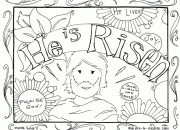Target Audience and Educational Applications: The Anatomy Coloring Book

The anatomy coloring book – Anatomy coloring books offer a unique and engaging approach to learning about the human body, appealing to a diverse range of individuals. Their effectiveness stems from the combination of visual learning and active participation, making complex anatomical structures more accessible and memorable.The pedagogical benefits of this method are significant, offering a multi-sensory learning experience that caters to various learning styles.
Coloring promotes active recall and reinforces learning through repetitive engagement with the material. The process of meticulously coloring anatomical structures helps solidify their location, relationships, and overall structure in the learner’s mind.
Target Audience, The anatomy coloring book
The primary target audience for anatomy coloring books is quite broad. Students of all ages, from elementary school learning basic body parts to university students studying complex systems, can benefit. Medical professionals, particularly those in training, find them useful for review and reinforcement of knowledge. Furthermore, hobbyists and individuals interested in the human body for personal enrichment also constitute a significant portion of the target audience.
The accessibility and engaging nature of coloring books make them suitable for a wide range of ages and skill levels.
Pedagogical Benefits of Anatomy Coloring Books
Coloring books facilitate learning through several key mechanisms. Firstly, the visual nature of the activity engages the visual learning style, which is dominant for many individuals. Secondly, the act of coloring itself encourages active participation and improves retention. The repetitive nature of the task strengthens neural pathways associated with the anatomical structures being colored. Thirdly, the detailed illustrations provide a clear and concise representation of complex anatomical relationships, surpassing the limitations of simple diagrams found in textbooks.
Finally, coloring provides a relaxed and enjoyable learning experience, reducing stress and anxiety often associated with traditional learning methods.
Learning Styles That Benefit
Anatomy coloring books cater to a variety of learning styles, most notably visual, kinesthetic, and even auditory learners (through self-explanation during the process). Visual learners benefit directly from the detailed illustrations. Kinesthetic learners engage physically through the act of coloring, making the learning process more tactile and memorable. Even auditory learners can benefit by narrating the structures they are coloring, further reinforcing their knowledge.
The Anatomy Coloring Book offers a detailed and engaging way to learn about the human body. For a completely different approach to the coloring book experience, you might consider the surprisingly therapeutic outlet of a swear word coloring book , which offers a unique stress-relieving activity. Returning to the precision of anatomical study, however, the Anatomy Coloring Book remains a valuable tool for visual learners.
The multi-sensory approach inherent in this method makes it particularly effective for diverse learning styles.
Comparative Effectiveness of Learning Methods
The following table compares the effectiveness of anatomy coloring books with other common learning methods. It’s important to note that effectiveness is subjective and depends on individual learning styles and preferences. However, the table provides a general comparison based on commonly observed learning outcomes.
| Learning Method | Visual Learning | Active Recall | Retention |
|---|---|---|---|
| Lectures | Moderate | Low | Low to Moderate |
| Textbooks | Moderate to High | Moderate | Moderate |
| Anatomy Coloring Books | High | High | High |
| Interactive Simulations | High | High | High |
Content and Accuracy of Anatomical Information
The accuracy and detail of anatomical information presented in coloring books significantly impact their educational value. A well-designed book should provide clear, correct, and age-appropriate depictions of anatomical structures, fostering accurate understanding and avoiding misconceptions. Conversely, inaccuracies or oversimplifications can lead to flawed knowledge and hinder learning. This analysis examines the content and accuracy of several popular anatomy coloring books, comparing their approaches to detail and identifying potential issues.The level of detail varies considerably across different anatomy coloring books.
Some cater to younger audiences with simplified representations, focusing on basic structures and labeling major organs. Others target older students or professionals, offering more complex illustrations with finer details and inclusion of less prominent anatomical features. This variation reflects the diverse needs and learning levels of the intended users. For instance, a book for elementary school children might show a simplified heart with major vessels, while a book for medical students might depict the intricate chambers, valves, and coronary arteries.
Accuracy of Anatomical Representations
A thorough review of several popular anatomy coloring books reveals a range of accuracy levels. Some books demonstrate a high degree of accuracy, faithfully representing the anatomical structures and their relationships. These books often include detailed captions and labels, ensuring clarity and precision. However, other books may contain simplifications or even inaccuracies, particularly in the representation of complex structures or subtle anatomical variations.
For example, the portrayal of the nervous system can be challenging; some books may oversimplify the intricate branching of nerves or incorrectly depict the location of specific ganglia. Similarly, the representation of muscles, particularly their origins and insertions, can be prone to inaccuracies, leading to confusion about muscle actions and function.
Level of Detail and Visual Presentation
The level of detail in an anatomy coloring book directly affects its pedagogical value. Books with a high level of detail allow for a deeper understanding of complex anatomical relationships. For instance, a book showing the layers of the skin with clear labels of the epidermis, dermis, and hypodermis will enhance comprehension better than a simplified drawing showing only the outer layer.
Conversely, excessive detail can overwhelm younger learners, hindering their understanding. Therefore, the appropriate level of detail must be carefully considered based on the target audience. Furthermore, the visual presentation plays a crucial role. Clear, well-labeled diagrams with consistent color-coding and use of visual cues (such as arrows and lines) enhance comprehension and improve learning outcomes. Poorly rendered illustrations, unclear labeling, or inconsistent color schemes can confuse learners and lead to misconceptions.
Potential Inaccuracies and Misleading Information
While many anatomy coloring books strive for accuracy, potential inaccuracies can arise from several sources. Simplifications made for clarity can sometimes oversimplify structures, omitting crucial details or misrepresenting their relationships. Furthermore, outdated anatomical knowledge or reliance on less reliable sources can introduce errors. For example, some older books might use outdated terminology or depict anatomical structures based on incomplete or flawed research.
The use of artistic license, while sometimes helpful for visual appeal, can also lead to inaccuracies if not carefully controlled. For instance, the proportions of organs or the representation of their spatial relationships might be altered to improve the visual aesthetic, potentially leading to a distorted understanding of the actual anatomy.
Illustrative Examples and Detailed Descriptions

Anatomy coloring books utilize visual aids to enhance learning and retention. The effectiveness of these books hinges on the clarity, accuracy, and engaging nature of their illustrations and accompanying descriptions. Successful designs balance detailed anatomical representation with an aesthetic appeal that encourages engagement.The visual representation of anatomical structures within these books aims to bridge the gap between abstract textbook diagrams and the complex three-dimensionality of the human body.
Effective coloring books achieve this through a combination of strategic color palettes, precise labeling, and a layout that facilitates understanding.
The Human Heart
A typical depiction of the human heart in an anatomy coloring book often presents a slightly cutaway view, revealing the internal chambers and valves. The heart is usually illustrated in shades of red and pink, reflecting the oxygenated and deoxygenated blood flow. The atria and ventricles are clearly demarcated, with labels indicating the right atrium, right ventricle, left atrium, and left ventricle.
The major blood vessels – the aorta, pulmonary artery, pulmonary veins, and vena cava – are shown connecting to the heart, and their names are clearly labeled. The heart valves (tricuspid, mitral, pulmonary, and aortic) are often depicted as flaps or cusps, with their positions and functions indicated. A color key might differentiate oxygenated blood (bright red) from deoxygenated blood (darker red or purplish-red).
The overall design emphasizes the spatial relationships between the chambers and valves, promoting a better understanding of blood flow.
The Nervous System
Illustrations of the nervous system typically begin with a simplified overview of the central nervous system (brain and spinal cord) and the peripheral nervous system (nerves extending throughout the body). The brain is often shown in a lateral view, with major lobes (frontal, parietal, temporal, occipital) clearly identified and labeled. Internal structures like the cerebellum and brainstem might be partially visible, depending on the complexity of the illustration.
Color-coding could be used to differentiate gray matter and white matter, or to highlight specific brain regions associated with different functions. The spinal cord is usually depicted as a long, cylindrical structure extending from the brainstem. Peripheral nerves are often represented as branching lines extending from the spinal cord and brain to various parts of the body.
The clarity and accuracy of the nervous system illustration is crucial for understanding the intricate pathways of nerve impulses. Simple, uncluttered diagrams are preferred to avoid overwhelming the learner.
The Skeletal System
The skeletal system is often illustrated using a combination of techniques to enhance understanding. A frontal view of the skeleton is common, showing the bones in their natural positions. Individual bones might be highlighted in different shades of beige, ivory, or off-white to enhance visual distinction. Labeling is critical, with each major bone clearly identified. Some books might employ a transparent overlay technique, where a full skeleton is shown underneath a layer that highlights a specific bone group (e.g., skull, rib cage, pelvis) or individual bones.
This allows for a layered approach to learning, focusing on individual components within the larger context of the entire skeletal system. Furthermore, some illustrations may use subtle shading to depict bone texture and depth, enhancing the three-dimensional aspect. The use of articulated diagrams (showing joints and their range of motion) can further improve comprehension.










